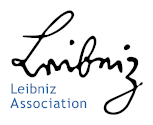- The Institute
- Research
- Dictatorships in the 20th Century
- Democracies and their Historical Self-Perceptions
- Transformations in Most Recent History
- International and Transnational Relations
- Edited Source Collections
- Dissertation Projects
- Completed Projects
- Dokumentation Obersalzberg
- Center for Holocaust Studies
- Berlin Center for Cold War Studies
- Publications
- Vierteljahrshefte
- The Archives
- Library
- Center for Holocaust Studies
- News
- Dates
- Press
- Recent Publications
- News from the Institute
- Topics
- Feature film under National Socialism
- The history of the Federal Ministry of Finance (1945-1990)
- Reordering Yugoslavia, Rethinking Europe
- Munich 1972
- Confronting Decline
- Digital Contemporary History
- Transportation in Germany
- German Federal Chancellery
- Democratic Culture and the Nazi Past
- The History of the Treuhandanstalt
- Foreign Policy Documentation (AAPD)
- Dokumentation Obersalzberg
- Hitler, Mein Kampf. A Critical Edition
- "Man hört, man spricht"
- Dictatorships in the 20th Century
- Democracies and their Historical Self-Perceptions
- Transformations in Most Recent History
- International and Transnational Relations
- Edited Source Collections
- Dissertation Projects
- Completed Projects
- Dokumentation Obersalzberg
- Center for Holocaust Studies
- Berlin Center for Cold War Studies
Heinrich Hoffmann: Hitler’s Photographer and his Networks between Politics, Propaganda, and Profit
Employees (IfZ):
Dr. Sebastian Peters
Project content:
This dissertation project analyzes the career of the photographer and publisher Heinrich Hoffmann (1885-1957). Hoffmann, who joined the Nazi Party in 1920, quickly became a close Hitler confidant, and used his exclusive access to the National Socialist leadership to become one of the most important photographers of the Nazi era. The sales of the photographs he took and published would turn him into a multimillionaire. Even without a significant political office, he was able to achieve influence and a considerable fortune as a member of Hitler’s inner circle. Hoffmann also took an important position on the art market of the Nazi era by acting both as a functionary and a collector.
While previous studies have focused chiefly on Hoffmann’s photography, this project looks into his career as an actor close to the Nazi leadership and as a profiteer of this activity. Following an approach grounded in broker theory, this study will investigate the photographer’s expansive networks and his functions within them along with his interactions with individual subgroups. In addition to his social capital, Hoffmann’s monetary wealth will be taken into account as a means of analyzing the direct connection between networking and financial growth. The period of the study extends through Hoffmann’s death in 1957, including continuities of his network and post-war support in matters such as the recovery of his confiscated property. This approach will thus lead to insights beyond only filling biographical gaps and can contribute greatly to an understanding of the networks of the Nazi elite, their mechanisms of enrichment, and their long subsequent history.
Supported by the Cusanuswerk Foundation, Bonn






